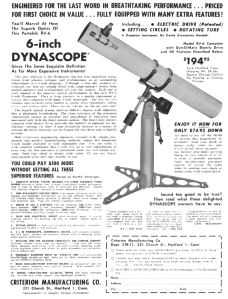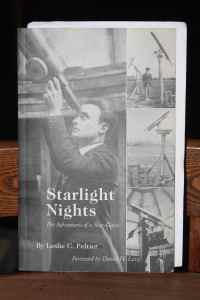In its March issue, The Atlantic published a story about how the Green family, owners of the now-infamous Hobby Lobby retail chain, are currently in the process of creating a new Museum of the Bible in Washington, D.C. The article raises some specific, detailed questions regarding the legality and ethics of the methods by which the Greens acquired their artifacts. It ends up questioning the very basis of the museum’s creation, accusing the Greens of engaging in pedagogy rather than stimulating open and honest discussion. The ways in which Joel Bader and Candida Moss characterize the Museum of the Bible enterprise reveal the subtle ways in which pundits influence the public. In the end, “Can Hobby Lobby Buy the Bible?” ends up doing exactly what it accuses the Greens of doing, making me wonder if the authors simply wish to smear the undertaking because of the Supreme Court’s ruling on Hobby Lobby’s birth control policies.
I feel that I must, in the interest of full disclosure, say that I think the Greens are completely off base in their views of the immutability of scripture. By showcasing the earliest available written fragments of the Bible, they wish to demonstrate the truth of Biblical teachings, showing how little they have changed over the years of retelling. They cite the Authorized Version (the “King James” Bible) as the ultimate expression of what a religious text should be. The article’s authors are correct that, “The main story that [this exhibit] tells about the Bible, in short, is a Protestant one.” The Greens either do not know, or are ignoring, that the King James I, who came from Scotland, ordered the compilation of his authorized version to create religious unity throughout Great Britain. He wished to sort out the many translations that existed in his kingdom by having experts from all parts of the country meet to decide the single best way to express the passages that conflicted. Often, they made their decision based on what sounded most poetic in early 17th century English. As Adam Nicolson points out in God’s Secretaries: The Making of the King James Bible, it is “the greatest book ever written by a committee.” This hardly makes the case for the unchanging nature of the work.
Baden and Moss do not base their criticisms on history, though. They seem to think that people should question the Museum of the Bible because the Greens are out-of-step with modern American culture. Take a seemingly-innocuous passage about the authors’ interview with Steve Green, the president of Hobby Lobby. They state:
Not once during our time together did he check his phone or watch.
When I read that, I thought, “Wow, here’s someone who respects the time of those who are interviewing him. He wants them to know they have his full attention, so he is behaving politely.”
Baden and Moss do not agree. The next sentence reads:
He had the air of a man who knew that people would wait for him.
They have managed to turn manners into a form of narcissistic tyranny. How dare he not look at a cellular device from time to time! Doesn’t he know that someone might need to send him a joke, show him a picture of a meal, give him a coupon, make fun of Donald Trump talk to him? He does not bow to the machine the way we all do! He does not share our addiction! He just does not get it! There is something wrong with him! Burn the witch!
Worse, The Atlantic’s correspondents hint that the Green family may be in league with terrorists as they attempt to create their museum. They point out that archaeologists have been shocked by the amount of artifacts that have come into the family’s collection. Since many of these objects were previously unknown to scholars, questions arose as to their provenance. It turns out that the Greens have been less than meticulous in their record keeping and their investigation of the legality of some of their purchases. These actions certainly warrant scrutiny. It would be appalling to break laws in order to bring your view of religion to the world. But while they don’t come right out and say it, Baden and Moss hint that there might be something more nefarious at work:
The rise of the Islamic State, or ISIS, has brought heightened attention to the antiquities trade. That’s because the group considers the looting and trafficking of antiquities a valuable source of revenue. “Such funding,” the UN Security Council recently declared, “is being used to support recruitment efforts and to strengthen operational capability to organize and carry out terrorist attacks.” In May, when U.S. forces assassinated Abu Sayyaf, a senior ISIS officer, and then raided his compound in Syria, they found it stuffed with hundreds of ancient Iraqi artifacts.
What image could possibly come to mind other than one of Steve Green not checking his phone while buying papyrus fragments out of a windowless van filled with automatic rifles and rocket launchers in a back alley? The authors back off a little:
For these reasons, the issue of provenance—the record of how an artifact was discovered, and who has owned it since—has become crucial in the study of antiquities, especially for newly announced artifacts. In 1970, UNESCO drafted a landmark convention calling on member nations to delegitimize the sale of cultural artifacts. If an item can be shown to have been removed from its country of origin before 1970, collectors can generally be secure that its purchase is legal. Records of sale, however, are not always well maintained (if they are maintained at all)—and, of course, they can be forged.
But the damage is done. They certainly don’t say Hobby Lobby is not knowingly funding terrorism.
The article’s final strategy works in a most subtle way, but that makes it the most insidious and dangerous ploy. The authors present their overall concerns about the Museum of the Bible as questions of open-mindedness and intellectual dialogue:
The thousands of artifacts they have so rapidly acquired could become merely the pictures that accompany this story, which, put simply, is this: The text of the Bible has essentially never changed, and its authority is timeless.
There’s nothing inherently wrong with this message. From a faith perspective, it’s no better or worse than any other. What’s striking, though, is that the Greens have potentially figured out a way to make one story of the Bible seem like the story of the Bible.
Think back to the last time you watched a documentary on evolution or visited a museum detailing the incredible age of the Earth. Did the producers feel obligated to say, “This is simply one theory. Many people believe that God created the world in a week and species never change”? Of course not. Science feels sure it has the story of the Earth, and wants to educate you so that you know the truth as well. Even though new research constantly changes the currently-accepted picture of cosmology or geology, scientists always speak to the public of their current models as certain. Only they themselves are allowed to question them.
I remember another example from the time when I lived in Washington, D.C. The issue involved how to address the atomic bombing of Hiroshima in the display of the B-29 Enola Gay. As originally designed, the exhibit questioned President Truman’s decision to drop the bomb and blamed that action for ushering in the age of the nuclear arms race. Protests by veterans’ groups resulted in a redesign of the exhibit, and this triggered outrage on the part of historians. In essence, they were demanding the right to teach their beliefs to others via museum displays. This doesn’t sound all that different from what the Museum of the Bible will try to do. But how many of those historians would stand up in support of the Greens now? You can’t have it both ways.
It seems as though Baden and Moss also wish to have their ideas accepted as the story. [Should we listen to closed-minded supporters of terrorism who don’t even check their phones during interviews? Only an ignoramus would do that!] And remember, all of this criticism is taking place before the museum actually opens. The editors of The Atlantic clearly do not want visitors to the nation’s capital influenced by the Museum of the Bible. I believe they unintentionally show why:
Hobby Lobby, [Green] explained, is not just a business. It’s a business that enables a ministry, and at the center of that ministry is the Bible.
I guess that’s too dangerous an idea for some people to allow.




















